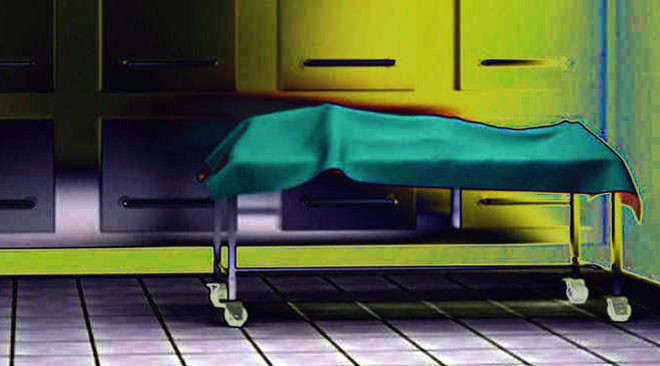
There is a need for more public mortuaries in a city with the population of 10 million

Along with so many public areas that need the special attention of the government, there is the matter of building more mortuaries in the city. The areas of mortuaries should be considered efficiently so that no serious medical and environmental issues are encountered.
Presently, Lahore has two known mortuaries -- one is situated at King Edward Medical University (KEMU)’s Forensic and Toxicology Department and the other in the Department of Forensic Medicine, Allama Iqbal Medical College (AIMC). The AIMC facility is rather new, established in 2009.
The one at KEMU was formed in 1983 but it is said to be developing at a great pace.
Although, initially, the administrations of the mortuaries at both the sites were reluctant to speak to TNS, Vice Chancellor KEMU Faisal Masood eventually provided an extent of information. He also facilitated an interaction with the Chairperson of the Forensic and Toxicology Department, Prof Dr Arif Rasheed Malik in which the latter divulged details.
"The Forensic Medicine Department of KEMU is a state-of-the-art facility," Prof Dr Malik said. "The postmortem examination labs have been built on modern standards keeping in view the academic requirements, the desired state and public services and protection of the working staff. A view gallery is constructed for the medical students in one of these laboratories that boast stainless-steel autopsy tables for fresh cadavers and porcelain autopsy tables for the decomposed ones.
"Additionally, these are furnished with positive pressure ventilation and closed water gulley system for drainage. Each laboratory is equipped with shadow-less light, ice blue lights and ultraviolet sterilisation. A changing room and lavatory are also provided."
Storage facilities for the dead bodies are provided for, something that Dr Malik attributed to the "hard work of my teacher, Prof Dr Nasib R Awan."
The Punjab government helped build a cold storage within the vicinity of the department that has the capacity for 81 dead bodies at one time.
Lack of enough space leads to early spoilage of bodies that can interfere in forensic autopsies. Under such circumstances, the government should provide enough funding in order to build mortuaries that follow the international standards of quality.
The Lecture Theatre has also recently being done up.
But there is always room for improvement. All told, the said department at KEMU needs more dissection tools in the laboratory, the staff requires proper training and only then they should be given the permission to perform medical examinations on cadavers.
KEMU’s mortuary can preserve only 81 cadavers which creates a great deal of chaos when more fatalities occur. The waiting room for families who are there to pick their loved ones’ bodies, is not in good shape as it is situated in the open garage that does not provide cover from seasonal troubles.
Besides, the administration only accounts for cases in which the deaths are the result of unnatural causes and they do not accommodate cases of persons whose death occurred naturally. This creates problems when the families need a place to store the dead bodies.
On the other hand, even after three consecutive meeting plans, the AIMC administration did not provide any information on the facility. The clerks and staff did not want to share their views either, because of pressure from the authorities. The question that arises is: Why such reluctance?
Another issue that needs to be addressed immediately is that there are only two government mortuaries that handle the entire burden of the city and, to some extent, that of the adjacent district of Lahore. This factor not only leads to hassles in administrative procedures, it is also a great health and environmental hazard.
Normally, most of the dead bodies are covered in blood because of the unnatural causes of deaths and there isn’t enough space to place the cadavers nor there is any bag to cover them. Also, the persons who died of a particular disease are the serious threat because this can lead to epidemics.
Lack of enough space leads to early spoilage of bodies that can interfere in forensic autopsies. Under such circumstances, the government should provide enough funds in order to build mortuaries that follow the international standards.
National Pathology Accreditation Advisory Council Australia issued a whole edition on the ‘Requirements for the Facilities and Operation of Mortuaries.’ This is a remarkable example of how the world takes the issue so seriously.
A conversation with KEMU Vice Chancellor Dr Faisal Masood and Chairperson, Forensic and Toxicology department, made this clear that the administration is willing to improve the current situation and also set up new mortuaries. But these plans can only be brought to fruition if the government realises the need and importance of the facility and provide enough funds to the hospitals.
There should be proper legislation on such concerns and the legal manuscripts should include clauses that are reformative and adjustable with the passage of time., according to increase in population etc.
Unfortunately, this section stands neglected by the government as the entire health sector in Pakistan.